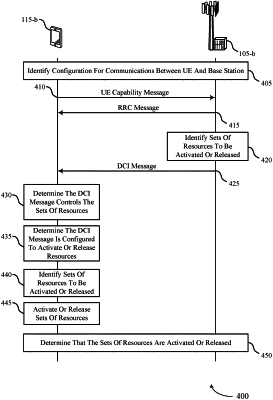| CPC H04W 72/23 (2023.01) | 28 Claims |

|
1. An apparatus for wireless communication at a user equipment (UE), comprising:
one or more processors, and
memory coupled with the one or more processors;
the one or more processors configured to cause the apparatus to:
identify a configuration for communications with a base station on a plurality of sets of resources across a plurality of component carriers, the configuration including a plurality of sets of resources on multiple component carriers, including at least a first set of resources on a first component carrier of the plurality of component carriers and a second set of resources on a second component carrier of the plurality of component carriers;
receive, from the base station, a downlink control information message on the first component carrier, the downlink control information message comprising a downlink control information format that controls the plurality of sets of resources across the plurality of component carriers based at least in part on at least a portion of the downlink control information message being scrambled according to a configured scheduling radio network temporary identifier; and
determine that the first set of resources and the second set of resources are one of activated or released based at least in part on a first indication in the downlink control information message and at least the portion of the downlink control information message being scrambled according to the configured scheduling radio network temporary identifier.
|